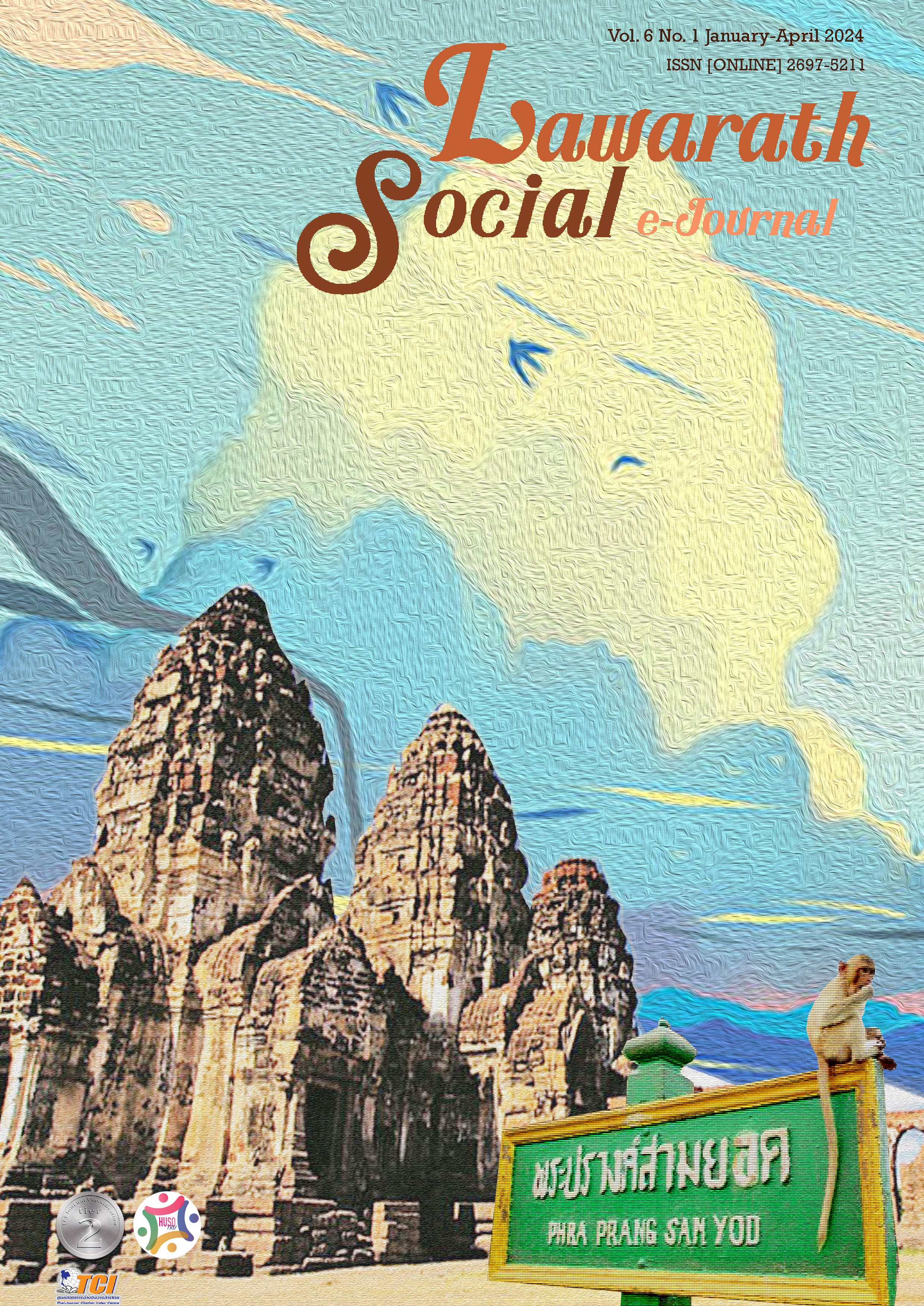A Study of Chinese Inverse Morphemes Words
Keywords:
Inverse Morphemes Word, Chinese Language, Word Meaning, Functions of WordsAbstract
This research aims to study the meanings and functions of Chinese inverse morphemes words focusing on the AB - BA format from the book “Chinese Proficiency Vocabulary and Character Level Outline” (2001). The study found that the rearranged Chinese words would often have varied meanings from the original one. They could be classified into three forms: 1. the inverse morphemes words that had similar or related meanings (20 pairs); 2. the inverse morphemes words with different meanings (5 pairs); and 3. the inverse morphemes words that had different meanings but shared some similarities (27 pairs). In terms of the functions of word, when Chinese words undergo the position rearrangements, those words can also serve as different parts of speech. They could be categorized into two groups: 1. the function of original words was unchanged (23 pairs) and 2. the function of words changed from its original function (29 pairs), which those words could serve more than one types of part of speech. Therefore, the Chinese inverse morphemes words might not be defined by solely distinguishing the words' meaning, but word's functions and contexts conveying comprehensive meanings should be also emphasized.
Downloads
References
กมลทิพย์ รักเกียรติยศ. (2562, มกราคม-มิถุนายน). การศึกษาคำศัพท์สลับตำแหน่งในภาษาจีน. วารสารวิชาการ คณะมนุษยศาสตร์และสังคมศาสตร์ มหาวิทยาลัยราชภัฏพระนคร, 3(1), 96-113.
สิทธา พหลภิญโญ, กัญญาณัฐ เกรียงเกตุ, และกฤษณ์ โกสวัสดิ์. (2555, พฤษภาคม-สิงหาคม). ข้อสังเกตการสลับลำดับคำในคำซ้อน 2 พยางค์. วารสารวิชาการมหาวิทยาลัยนเรศวร, 20(2), 62-66.
Cao, W. (2004). Xiandai Hanyu Cihui Yanjiu. Peking: Peking University Press.
Chinese Proficiency Test Committee Office Test Center. (2001). Hanyu Shuiping Cihui Yu Hanzi Dengji Dagang (Revision). Peking: Economic Science Press.
Ding, M. (1957, February). The Relationship Between the Structural form and The Meaning of Homonyms. Academic Monthly, (2), 48-54.
Han, S. (2014). Research on The Contrary-Order Synonym in Contemporary Chinese Dictionary 6th. Master’s thesis, Northwest Normal University.
Hu, W. (2015). Research on Reverse-Morpheme Word Pairs and Teaching Chinese as a Foreign Language. Master’s thesis, East China Normal University.
Jia, J. (2013). The Comparative Study of Inverse Morphemes Word Pairs Between Modern Chinese Dictionary (6th Edition) and Modern Chinese Standard Dictionary (2nd Edition). Master’s thesis, Ocean University of China.
Liu, F. (2007, May). Examining Foreign Chinese Vocabulary Teaching through HSK Homographs and Antonyms. Journal of Yunnan Normal University, 5(3), 40-46.
Meng, X. (2020). The Teaching Research of Inverse Morpheme Words of Chinese as a Foreign Language Take the Foreign Students Teaching of Lanzhou University as Example. Master’s thesis, Lanzhou University.
Song, L. (2020). A Study on the Errors and Teaching Suggestions of Inverse Morphemes Words of the Foreign Students. Master’s thesis, Nanjing University.
Wu, Ch. (2020). Investigation and Teaching Strategies of Mae Fah Luang University Students Learning Inverse Morphemes Word Pairs. Master’s thesis, Fujian Normal University.
Xia, Y. (2014). The Research on Foreign Students Learning Easily Confused Inverse Morphemes Words. Master’s thesis, Nanchang University.
Xing, Z. (2020). Research on The Reversible Words in Teaching Chinese as Foreign Language. Master’s thesis, Xinjiang University.
Xu, H. (2013). Research of Inverse Morphemes Words in Teaching Chinese As A Foreign Language. Master’s thesis, Nanjing University.
Yu, H. (2014). Research on Words of Allotropy in Modern Chinese Dictionary. Master’s thesis, Jiangxi Normal University.
Zhai, X. (2021). A Study on Synonyms of Homoprime and Reverse Order in Modern Chinese Dictionary (7th Edition). Master’s thesis, Beijing Foreign Studies University.
Zhao, Y. (2013). Inverse Morpheme Different Words Based on The Reverse of Modern Chinese Dictionary. Master’s thesis, Central China Normal University.
Downloads
Published
How to Cite
Issue
Section
License

This work is licensed under a Creative Commons Attribution-NonCommercial-NoDerivatives 4.0 International License.



